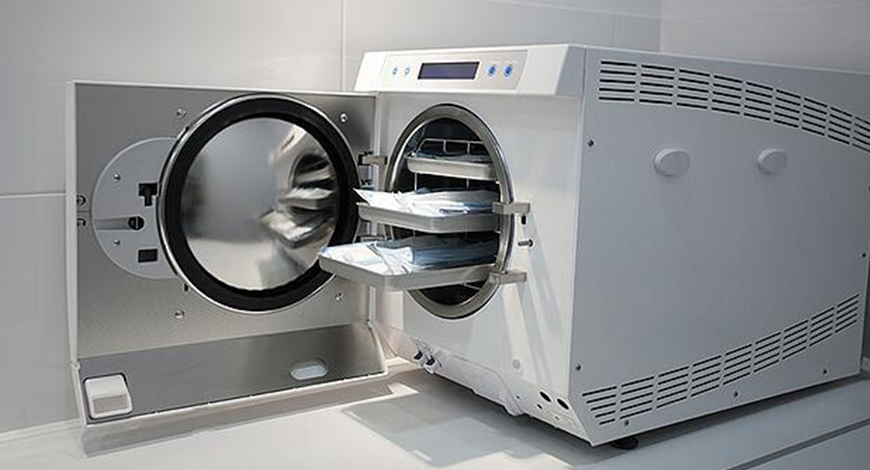Trends
Why finding suitable alternatives for medical device sterilization is crucial

Finding suitable ethylene oxide alternatives for medical device sterilization is more crucial than ever with the EPA’s new emissions rule in light of the chemical’s health risks.
Ethylene oxide (abbreviated as EtO or EO) is estimated to be used to sterilize of half of all medical devices, or about 20 billion units per year. It’s primarily used for new, single-use and reusable devices and equipment. For example EtO is used to sterilize an estimated 95% of all surgical kits.
EtO alternatives include radiation sterilization (using gamma rays or electron beams) and heat, but there are currently no EtO alternatives for some products.
Of all sterilization methods, EtO is least likely to harm a medical device’s materials or components. Other sterilization methods have limitations on material compatibility and scalability or lack accepted validation measures for sterility assurance.
“The absence of EtO for use on medical devices and equipment would cause widespread disruption to the availability of sterile medical devices including feeding tubes used in neonatal intensive care units, drug-eluting cardiac stents, catheters, shunts, and other implantable devices,” the EPA said in its 2023 proposal for new EtO regulation.
But there are some EtO alternatives available for a wide range of medical devices, and more may be on the way as the FDA works with the medtech industry to ensure the safety of patients, sterilization workers and neighbors of sterilization facilities.
Radiation sterilization: gamma ray and electron beam (e-beam)
The next most common methods of medical device sterilization after EtO are two forms of radiation sterilization: gamma irradiation and electron beam (e-beam) irradiation. Like EtO, these methods can penetrate product packaging, and can even go further into airtight compartments where EtO can’t reach.
But radiation sterilization methods can damage semiconductors and degrade other electronics in medical devices. Radiation sterilization can also damage or otherwise change the properties of certain polymers and plastics, and discolors clear glass.
The FDA is working with the medtech industry to increase the use of radiation sterilization.
Vaporized hydrogen peroxide (VHP)
The FDA recognized vaporized hydrogen peroxide (VHP) as an Established Category A method of sterilization for medical devices in January 2024. (Other Category A sterilization methods include EtO, dry heat, moist heat and radiation.)
Long used as a sterilant in its aqueous form, hydrogen peroxide (H₂O₂) kills microorganisms like those that cause infections by oxidizing amino acids and proteins. Under ISO 22441:2022, VHP (also referred to as VH₂O₂) can be used to sterilize medical devices at low temperatures in both health care and industrial facilities.
What about heat sterilization as an ethylene oxide alternative?
Heat sterilization is the least expensive method of sterilization for medical devices, and that means any device that can be sterilized with heat instead of EtO probably already is. The high temperature of heat sterilization — whether dry heat or steam — makes it suitable only for heat-resistant materials, and the moisture from steam is a deal-breaker for electronics.
Potential ethylene oxide alternatives in development
The FDA has worked with at least four companies to identify new sterilization methods and technologies through its FDA Innovation Challenge, which is also seeking ways to reduce emissions from continued EtO sterilization.
This process has already led the FDA to add VHP (described above) to its list of Established Category A sterilization methods.
The companies working directly with the FDA on new sterilization methods and technologies are focusing on the following technologies:
- Supercritical carbon dioxide sterilization (NovaSterilis)
- Nitrogen dioxide sterilization (Noxilizer)
- Accelerator-based radiation sterilization (STERIS)
- Vaporized hydrogen peroxide-ozone sterilization (TSO3, a Stryker subsidiary)
The new sterilization methods that don’t use EtO would not only need to be safe and effective, but also meet certain criteria for compatibility, scalability and high throughput.
The new approaches would need to be compatible with a large cross-section of materials used for medical devices, packaging and sterile barriers, particularly materials that are compatible with EtO sterilization.
The FDA also wants the new approaches to have the potential for scale and effective sterilization of large volumes of devices in order to fulfill some or all of the demand for EtO sterilization.
Another potential alternative is chlorine dioxide gas, developed by Johnson & Johnson. The FDA approved the sterilant for contract sterilization of medical devices in 2021, and it’s been used for implantable contact lenses, artificial joints, suture products, surgical kits, vial stoppers, endoscopes and electronic devices.
But EtO has so far held one or more advantages over chlorine dioxide and other potential alternatives, so the search continues. Medical Design & Outsourcing












